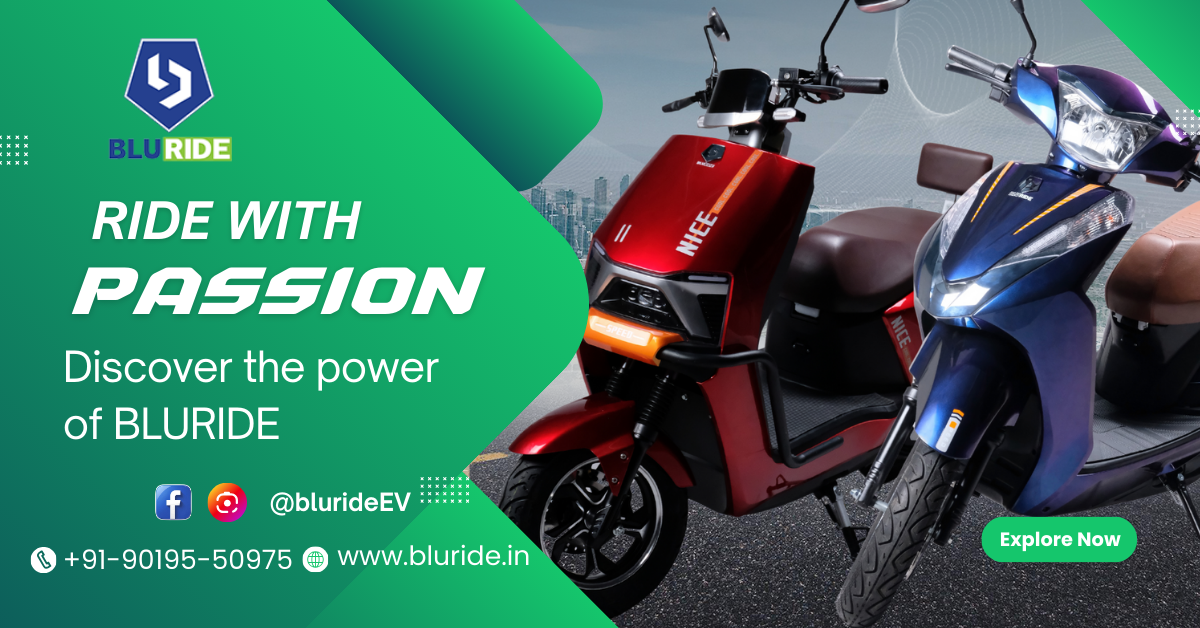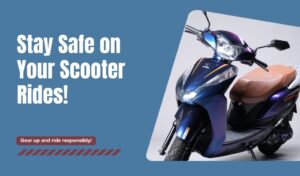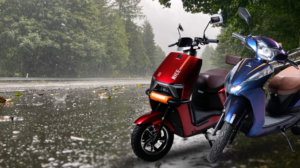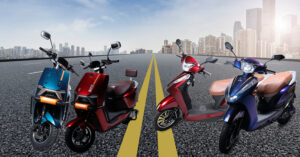Overview
Electric scooters (EV scooters) have surged in popularity over the past few years, offering an eco-friendly, cost-effective, and convenient mode of transport. However, despite their growing adoption, several myths and misconceptions still surround these vehicles. In this blog, we’ll debunk the most common myths about electric scooters and reveal the truth behind them.
Myth 1: Electric Scooters Are Slow and Weak
One of the most common misconceptions is that electric scooters are too slow and lack power. While early models may have had limitations, modern electric scooters come with powerful motors, allowing them to reach speeds of 25-50 mph or more. High-performance models can even rival traditional mopeds in speed and acceleration.
Additionally, advancements in battery technology and motor efficiency have enabled electric scooters to handle steep inclines and rough terrains, making them a reliable choice for both urban and off-road commuting.
Myth 2: EV Scooters Have a Short Battery Life and Limited Range
Another widespread myth is that electric scooters cannot travel far on a single charge. While range varies by model, many modern scooters can cover 30-80 miles per charge, depending on battery capacity and riding conditions.
Battery technology is continuously improving, with lithium-ion batteries becoming more efficient, lightweight, and long-lasting. Riders can also extend battery life by using regenerative braking and optimizing speed and weight distribution.
Myth 3: Electric Scooters Are Not Safe
Many skeptics believe that electric scooters are unsafe due to their small size and lack of protective enclosures. However, safety depends largely on how they are used. Here’s the truth:
- Many EV scooters are equipped with advanced braking systems, including dual-disc brakes, regenerative braking, and ABS.
- High-end scooters come with suspension systems for better shock absorption and control.
- Wearing proper safety gear (helmets, knee pads, gloves) greatly reduces the risk of injury.
- Responsible riding practices, such as obeying traffic laws and avoiding high-speed maneuvers, ensure a safe experience.
Like any vehicle, electric scooters are as safe as the rider using them.
Myth 4: Electric Scooters Are Expensive
Some people believe that electric scooters are an expensive luxury rather than an affordable transportation solution. While high-performance models can be costly, there are also plenty of budget-friendly options available .
Moreover, the long-term savings from using an electric scooter are significant:
- No fuel costs.
- Minimal maintenance expenses compared to cars and motorcycles.
- Reduced dependence on public transport or ride-hailing services.
With government incentives and subsidies in many regions, owning an electric scooter has become even more affordable.
Myth 5: EV Scooters Are Bad for the Environment
Some argue that electric scooters are not truly “green” because of battery production and disposal concerns. However, compared to gasoline-powered vehicles, electric scooters produce zero emissions, reducing urban air pollution and carbon footprints.
Key environmental benefits include:
- Lower energy consumption per mile compared to cars and motorcycles.
- Reduced congestion, leading to less overall pollution in cities.
- Battery recycling programs are being developed to minimize environmental impact.
While no transportation mode is 100% free of environmental impact, EV scooters are a far greener alternative to traditional vehicles.
Myth 6: Electric Scooters Can’t Handle Rough Roads
Many believe that electric scooters are only suitable for smooth city streets. While smaller, entry-level scooters may struggle with uneven terrain, mid-range and premium models come equipped with pneumatic (air-filled) tires, dual suspension, and rugged frames, making them capable of handling rough surfaces, gravel paths, and even light off-road conditions.
Riders looking for durability should consider scooters with:
- Large, air-filled tires for better shock absorption.
- Hydraulic or spring suspension for smooth rides.
- High ground clearance to navigate bumps and potholes with ease.
Myth 7: Electric Scooters Are Just a Fad
Skeptics claim that the popularity of electric scooters is just a trend that will fade away. However, market trends suggest otherwise:
- The global electric scooter market is projected to grow at a CAGR of over 10% in the next decade.
- Many cities worldwide are investing in e-scooter sharing programs to reduce congestion and pollution.
- Major automotive companies are entering the e-scooter industry, indicating long-term growth and investment.
With advancements in battery technology, better infrastructure, and increasing demand for sustainable transport, electric scooters are here to stay.
Myth 8: Electric Scooters Are Only for Young People
While younger riders may have popularized electric scooters, they are not limited to any age group. More professionals, commuters, and even seniors are adopting them for daily travel due to their convenience and efficiency.
Features that make electric scooters accessible for all ages include:
- Adjustable handlebars for various rider heights.
- Comfortable seats for longer rides.
Myth 9: Charging Electric Scooters Is Complicated and Time-Consuming
Charging an electric scooter is as simple as plugging in a smartphone. Most scooters take between 3-8 hours to charge fully, depending on the battery size and charger type.
Fast-charging options and swappable battery systems are also being introduced, reducing downtime significantly. Additionally, riders can charge scooters using standard household outlets, eliminating the need for special infrastructure.
Myth 10: EV Scooters Are Difficult to Maintain
Compared to gasoline-powered vehicles, electric scooters require minimal maintenance:
- No engine oil changes or complex mechanical upkeep.
- Fewer moving parts, reducing wear and tear.
- Simple tire and brake maintenance ensure longevity.
Routine checks on tires, brakes, and battery health are usually enough to keep an electric scooter running smoothly for years.
Conclusion
Electric scooters have proven to be a practical, eco-friendly, and cost-effective transportation solution. The myths surrounding them often stem from outdated information or misconceptions. As technology advances and adoption increases, EV scooters will continue to reshape urban mobility for the better.
Whether you’re considering buying one or just curious, understanding the truth behind these myths will help you make an informed decision about this exciting mode of transport. So, are you ready to embrace the future of commuting?









Leave a reply